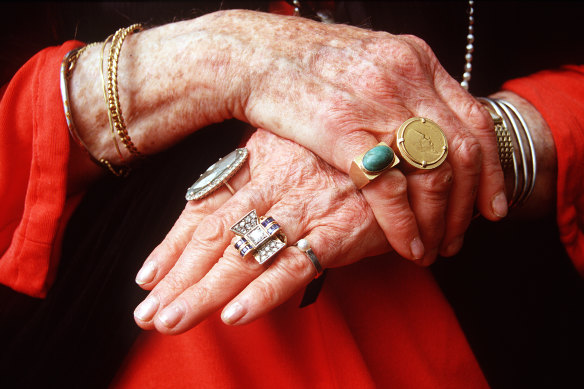Wealthy Australians should draw down their superannuation and pay more for their aged care costs – particularly their everyday living expenses such as meals, laundry and cleaning – a major review of aged care funding has told the Albanese government.
A government-appointed taskforce has rejected arguments for a taxpayer levy to fund the country’s growing aged care bill, saying it would be unfair to future generations when older Australians were retiring with growing levels of wealth.
Aged Care Minister Anika Wells will on Tuesday publish the taskforce’s 23 recommendations to make the sector more sustainable as it becomes one of the fastest-growing areas of federal expenditure and the Baby Boomer generation retires with higher expectations around quality.

The taskforce said there was a strong case for increasing co-contributions for those with the means to do so.Credit: Jessica Hromas
Over the next decade alone, the independent Parliamentary Budget Office estimates the cost of aged care will climb by more than 82 per cent – or almost $29 billion – to $63.6 billion in 2033-34.
“Australia’s aged care system is under stress. There is universal acceptance that something must change in order to ensure all Australians can age with the dignity, safety and high-quality care they deserve,” Wells said.
The federal government covers 75 per cent of residential aged care costs and 95 per cent of home care costs. But this was “not an optimal or fair mix”, the taskforce report said.
“Given the increasing wealth of many older people and the declining working age (that is tax-paying) population, there is a strong case to increase participant co-contributions for those with the means to contribute, noting that there will always be a group of participants who need more government support.”
While the taskforce supported the government maintaining its central role in funding aged care, it said it did not back a specific tax increase for future aged care costs, such as a Medicare-style levy recommended by the 2021 aged care royal commission.
“There are substantial intergenerational equity issues in asking the working age population, which is becoming proportionally smaller, to pay for these services,” it said.
“Moreover, superannuation has been designed to support people to grow their wealth and fund the costs associated with retirement including aged care.”
It called for Australians’ superannuation balances – one-third of which are projected to be passed on as inheritances by the middle of the century – to be drawn down in retirement to cover health, lifestyle, other living expenses and aged care costs.
“Superannuation trends, combined with high asset wealth through the family home and other investments, mean increasingly people still have accumulated wealth and income streams when they need to access aged care services,” the report said.
“As a result, there is more scope for older people to contribute to their aged care costs by using their accumulated wealth than in previous generations.”
However, there would still be people of fewer means who would need the support of a safety net.
The taskforce said someone’s aged pension status would be an appropriate starting point to determine who should be asked to pay more for aged care – which would simplify the current system – but ultimately this would need to be worked through by government.
Aged care is currently funded through three components: care costs in residential homes, which cover day-to-day nursing and personal care; the basic daily living fee, which covers services such as meals, laundry and cleaning; and accommodation costs, which are either paid daily or as a refundable lump sum.
At the moment, there is a means test for “care costs”, which requires some people to contribute out of their own pocket, but this is limited to around $33,000 a year, or $78,500 over a lifetime. The basic daily living fee is also capped: set at 85 per cent of the age pension, or about $61 a day.
The taskforce said the federal government should cover the entirety of people’s care costs, which could be “unexpected and significant”, so no one was worried about whether they could pay for nursing or care.
But this should be supplemented by significantly higher fees for daily living expenses, such as cooking and cleaning, which people had typically paid for their whole lives. Residents could negotiate these fees with their provider, and receive additional services or amenities, as long as there were consumer protections and complaints processes in place.
“This would allow greater flexibility and offerings for residents willing to pay, and allow providers to diversify their offerings and obtain additional revenue,” the report said.
Lump-sum accommodation deposits that people make when going into residential care should also be phased out and replaced by a rental-only model.
The taskforce argued this new funding mix would simplify the situation for older people and reduce administration costs for providers, but would need to come with a strong safety net for people without income or assets.
Its high-level recommendations leave major decisions about detail – such as which Australians should be charged more, and how much those fees would be – to the federal government, which is expected to formally respond to the report ahead of the May budget.
Cut through the noise of federal politics with news, views and expert analysis. Subscribers can sign up to our weekly Inside Politics newsletter.